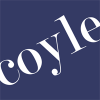The National Restaurant Association Restaurant, Hotel-Motel Show 2011 held in May brought together hundreds of exhibits, celebrity chef demos, and numerous panels and education sessions, including a keynote from General Colin Powell. Coyle presents part 1 of a series of 7, highlighting key lessons and current trends from the exciting event.
Menu Labeling – What Consumers Want
We all know that obesity in both adults and children are hot topics and that this epidemic has been growing over the years. Following suit, one of hottest topics in the restaurant industry has been nutrition and calorie counting. With Health Care Reform in 2010, legislation was designed to provide customers with greater information over their nutritional intake. The FDA has started drafting regulatory language to mandate nutritional information and calories to be posted on menus for all national restaurant chains over 20 units. But what do consumers want?
In the session, “Menu Labeling: What It Means to You,” at the NRA Show in Chicago this May, Lisa Carlson from Unilever Foodsolutions shared some interesting research her company conducted to answer that question.
The “World Menu Report,” was based on a global survey of 3,500 diners in the United States, United Kingdom, Germany, China, Germany, Russia, Brazil and Turkey who eat out at least once a week. 75% of U.S. diners indicated they wanted more information about the nutritional value and sourcing of their meals. Nearly 64% indicated they would choose healthier meals if given the information. The global consumers’ attitudes towards health are changing and they want to know:
- Source of the food;
- How was it prepared?; and
- Nutritional content.
Based on the report, more than 67% of U.S. diners indicated they wanted to know about fat content and calorie content on menus. List of ingredients, how the food is cooked, sodium and additives were among other key items diners wanted to know about their food and would welcome on menus. While diners indicated that not all this information is necessary on the menu, the availability of the information was important.

Source: Unilever Food Solutions “World Menu Report”
As demonstrated in the table above, those in China, Brazil, Russia and Turkey truly crave more information about what is in the food being provided to them while dining out. In Russia, most prevalent was an interest in wanting to know more about hygiene and preparation. Carlson commented that the lower numbers in the UK, USA and Germany could be partly due to this information being more readily available in these regions through robust food labeling and that it could be more taken for granted.
Interesting as well was that, when asked, 65% of consumers said knowing about nutritional information would influence their choice when eating out. When they did respond this way, consumers generally cited that they need a nudge to remind them to eat healthy. Diners also reported that they thought the restaurant was responsible for creating healthier and appealing food, cited more than government, food companies and other options offered.
What did the chefs say? In a survey of 432 chefs attending culinary meetings, 93% said that calories could be reduced by about 10-25% without the consumers even noticing.
Conclusions? Transparency is key in communicating with today’s savvy diners. They expect that restaurants will provide them with the information they need and that chefs are working towards making their choices healthier. While the pending reform on menu labeling is looming for larger chains, even those without the restrictions may benefit from being more forthright with consumers. Perhaps not by telling how much fat is in the black cod or foie gras but by focusing attention to those items that are a healthy option: subtly or otherwise. Though consumers say they want to know, many restaurants also offer consumers an experience, an escape from the everyday, so treading that fine line between sufficient and too much information will continue to be a struggle.













